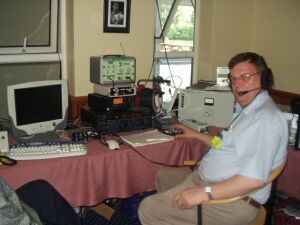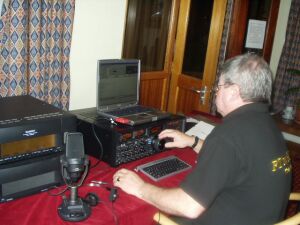

It is 8am on a bright November morning. Usually at this time of day I am tuning the bands seeing what is around before starting work. The past few weeks have seen very poor conditions, and we have just had one of the largest solar storms on record - I am not expecting to hear much. After working a EA6 on 30m I decide to listen on 17m. There is a station working a pile up on 18072, calling 'JA6 only', and wow there is a huge pile up of Japanese stations calling him 1kHz higher in frequency. The station is C56JHF, I worked him a couple of weeks ago so won't bother waiting for him to listen for Europe. But the band is open to JA, let's see what I can find. A bit higher in the band I hear a 579 signal with multipath echo on his signal, he is just signing off 'OM7... de JF1FSR, mni tnx dx QSO, 73...'. Let's give him a call and see what happens, I need JA for the WARC challenge and for a 2003 band slot. No response, let's try again - 'JF1FSR de G3YMC G3YMC K'. 'G3YMC de JF1FSR, GE TNX FER CALL, UR RST 559 559 NAME YOSHI YOSHI QTH YAMANASHI ....' Great, as I go back with my reply. Let's keep to basics at the moment and mention the QRP later, in case he loses me. But no, he comes straight back 'FB DAVE TNX FER 579..'. We continue to chat for a few minutes, and when I say I am using a K2 with 5W and a long wire he is amazed. 'VFB UR 5W AND LW FB DX!' We sign off and I tick Japan off on my check sheets, another one is in the bag, and I start the working day happy.
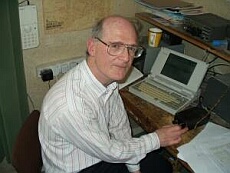
The Q code defines QRP as either 'Shall I reduce power' or 'Decrease power'. However for our purposes it is used to define a power output of below 5W in CW and data modes, or below 10W in SSB. There has been much discussion and debate on this limit, but the fact remains that it is the internationally agreed power limit for awards issued by the various QRP societies and for the QRP sections of most major contests. It should also be noted that this power level must be used for the whole of the contact, and it is not in the spirit of QRP to start a QSO at high power and then ask 'please listen for my 5W' - the initial calls must also be at this power.
The main QRP society in the UK is GQRP which has many members around the world and publishes a magazine SPRAT for its members. There are various awards for working QRP countries, 2 way QRP countries, other members and achievement awards. In 2002 and 2003 I was awarded the Chelmsley Trophy for my DX achievements during those years. Other countries have their own QRP clubs, and there is a lot of QRP activity from the eastern bloc counties.

I have entered the CW section of the CQ World Wide contest for many years in the QRP section and have always done fairly well, coming first or second G. In 2016 as a bit of fun I used it as an opportunity to raise funds for the Bracknell Methodist Church building fund. Church members and others donated an amount related to the number of QSOs I had during the contest as announced here after the contest - for instance, if I ended up with 800 QSOs and they donated 1 pence per QSO they would will be donating £8. The QSO count obviously depended a lot on what conditions were like over the weekend, typically I worked between 700 and 900 stations.
Bracknell Methodist Church, which is my own church and also the meeting place of Bracknell Amateur Radio Club, completed a major extension in 2013 with new rooms and modernised facilities. Around £60,000 was still needed to be raised towards this development and my challenge aimed to reduce this.
Due to an elevated solar wind stream and with the K index at 3 for all the weekend conditions were pretty depressed. Plenty of stations active but most of my QSOs were within Europe. A little DX was worked including FY, ZD8, PJ4 and a good opening to USA on Sunday afternoon but I don't think this CQWW will break many records. Ended up with 609 QSOs, a good result under the circumstances.
I entered the contest again in 2023 and you can read all about it here.
It is said that the antenna at any station is far more important than the power of the
transmitter. This is indeed true, but it does not mean that you have to have a big
antenna to do well with QRP. In fact it is also thought that running 5W into a triband
beam on the top of a huge tower is to some extent cheating when it comes down to the
spirit of QRP. The QTH here is very far from ideal - a typical urban terraced house with
a relatively small garden and surrounded on all sides by other houses. The problems of
TVI when running QRO was one of the main reasons for now using QRP (and the TVI problem
has certainly gone away). There is no scope for large antennas, towers are not really
possible and the plot is too narrow for most of the small beam antennas. So I have worked
most of my DX on a simple 60 ft long wire at around 30 ft high. It sometimes amazes me
what I can work with this set up - some amateurs have had very mixed results with long
wires and perhaps I am the exception.

The rig is an Elecraft K2. This rig offers all band performance and with all options fitted CW and SSB. I have the 160m, automatic ATU and computer interface modules fitted (but not the one for SSB, I am an exclusive CW operator). With its excellent receive performance the K2 makes an excellent rig for the QRP operator. The basic unit is capable of up to 12W output, but I leave mine permanently set to 5W so there is never any confusion as to whether a particular QSO counts for the QRP awards. Those who tire of QRP can add the KPA100 100W option....
See Some Experiences with the Elecraft K2 HF Transceiver by Dave Sergeant G3YMC and Bob Whelan G3PJT in RadCom March 2003.
I use a modified Butternut vertical on Top Band. See here for more details.
When I bought my K2 in March 2002 I hardly expected to get the results I did. Previous experience with QRP has been limited to working a few stations around Europe. Within days of completing the kit I was making contact with all sorts of DX and breaking pileups I used to struggle to break on QRO. I have kept track of the countries I have worked - initially in an Excel (or rather OpenOffice.org ) spreadsheet and later using the XMLog computer logging software.

As of November 2003 I had had QSOs with 183 DXCC countries, and during 2003 135 countries. The sunspots are now on their decline from the last peak in 2000 and conditions are now quite a lot down from last year and so it is somewhat harder to make QRP contacts - but that doesn't mean they aren't there to be worked. I operate on all 9 HF bands, but it is rather a struggle on Top Band from here, much much easier on the higher bands.
I also took part in the QRP WARC Speed Challenge, which was a competition to work as many QRP countries that you could on the 30m, 17m and 12m bands between June 2003 and May 2004. The results are no longer available for viewing on the web but G3YMC was well placed and received favourable comments.
One of the things I find enjoyable is keeping track of the countries I work each year and the number of band slots I have worked these on. I send my scores to two lists - the Countries Worked table which appears in the RSGB RadCom HF column which is compiled by Don G3XTT - and the CW table of countries and band slots compiled by John G3WGV. Neither of these lists is restricted to QRP operators, but it is encouraging to see that I can maintain a good postition in them against the big boys.
In 2012 I was awarded the Yeovil DXCC Trophy on behalf of Yeovil Amateur Radio Club for contacting 149 DXCC countries during the year with QRP power. I feel very priveledged with that honour.
Contests are an excellent way of increasing one's country score, and many of the international contests have QRP sections. Because most serious contest stations will be in the QRO sections it is in fact relatively easy to do very well in these QRP sections. For instance in the 2002 ARRL 10m contest I not only won the QRP CW section for England but managed to come 12th in the world in that section. I have had similar good results in the CQWW, WPX and IARU contests. In RSGB contests I have done well in the Low Power contest, the Commonwealth contest and IOTA.
For contests you really need computer logging as it takes much of the drudgery out of sorting out the logs after the event and gives you instant updates on your multipliers and duplicates. These days most entries for HF contests are needed to be sent in the Cabrillo format. I have been using Super Duper from EI5DI which is a very popular logging program and does all that is needed. As well as supporting the major international contests it also one of the few programs to specifically support UK contests. I use an old Toshiba 386 laptop during contests which interfaces with the K2 via its KIO2 serial interface and makes band switching very easy - and together with the KAT2 automatic tuner true instant band change.
Different contests have different rules and their own set of problems. For CQWW you need to operate on all bands and these are also 48 hour contests - it requires you to devote the whole weekend to the contest and arrange your eating and sleeping to maximise the QSOs (most people cannot operate for 48 hours without a break!). Usually it will be the LF bands at night and HF during the day, and it is important not to lose out on multipliers on for instance 10m when it is open. The ARRL 28MHz contest on the other hand is a single band contest and there is little or no propagation during darkness hours, so it is possible to have normal night's sleep!
For serious work in these contests consideration must be made of suitable antennas. In 2002 and 2003 in the 28MHz contest I put up a ¾ wave vertical groundplane which helped. In CQWW I had my 160m vertical up. Unfortunately due to space restrictions it is not possible to do that much in the way of antennas and my long wire has to serve.
Running QRP it is hard to call CQ and expect to hold a frequency, the competition from the QRO chaps is intense. However you can achieve a reasonable scoring rate with search and pounce, and it is relatively easy to work the rarer stations as the activity is spread over the band and the pile ups are lower. Split frequency working is not normally used in contests. And remember also there are band plans - during contests (especially the SSB ones) these tend to be ignored but be a good operator and resist calling or working people outside the normal segments.
Contests are fun with QRP, give it a go.

On 22nd February 2005 I achieved my goal of working 200 DXCC countries with QRP CW, when I QSOd V47Z in St. Kitts on 15m. With patchy conditions over the recent months it had become a struggle to achieve, with relatively few new countries being available to work. But I made it, and now must look forward to my next goal, 250!
In recognition of this achievement I was awarded the very first 'Elecraft DX Chaser Award', pictured right, for QSO'ing over 100 countries using an Elecraft transceiver.
This should give encouragement to anybody that even with modest antennas it is quite possible to work loads of DX. Perhaps it is down to operator skill, but you too can do it!
UPDATE: As of October 2015 I have now worked 258 QRP countries!
Recent new ones: VP8NO, HK1X, 1A0KM, 3B7C, VP6DX, YK9G, TO5DX (St. Barthelemy),YN2I, S04R, Z21BB, XU7ACY, HC2SL, PJ4A, ST0R, PJ6/K9VV,NH7O,T32C,PJ7J, PJ2/N0KE, TN2T, HK0NA, HU2DX (El Salvador), XQ1QZ (Chile),7O6T, R1FJL, A92GE, TR8CA, 9X0NH, SV2ASP/A, BY5CD, E44PM, FK8DD/M, TX6G (FO/A), VR2UW, ZD9XF, VK9DLX (Lord Howe), E6GG, KH2/KU0Q, VP8STI, D66D

At the RSGB HF Convention in October 2008 I was awarded this magnificant trophy in recognition of my achievements in low power communications. Instead of just another boring trophy this one is a complete rig - a special edition of the NorCal 20 transceiver. As a 5W 20m CW rig with built in keyer this is sure to keep me occupied until I have to pass it on to its next lucky recipient.
I had to ask around quite a lot to find the history of this trophy as there is virtually nothing about it to be found anywhere on the internet. Eventually I had replies from Richard G3XWH and David G3UNA who filled me in. This special version of the NorCal 20 was in fact made by David himself. It has quite a history.
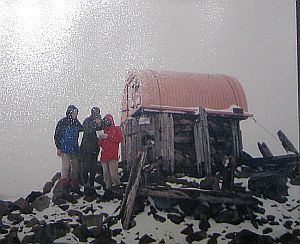
In Richard's own words:
Don, G4STT (previously G8STT) was a very well known and respected amateur and gentleman in the Harrogate area and also much further afield as he was net controller for many years of the Saturday morning 'Nidderdale Net' on 80m.
In 1982 myself and two other Harrogate Amateurs, Simon G4KCR and Robin G3YHC began fell walking on a monthly basis, mostly in the Yorkshire Dales and Lake District. In 1989 we decided to extend our range to Scotland and organised a few days in the Rannoch Moor area to include an ascent and activation of Ben Nevis using the callsign GB5BN. Simon arranged the loan of the then new Mizuho 2W 40m QRP rig and end-fed Zepp. from Waters and Stanton and Don agreed to be Net Control for the operation from Harrogate. Simon subsequently purchased the equipment and we went on to activate Scafell Pike and Snowdon summits using GB5SP and GB5SN respectively over the next two years. This lead to our taking the Mizuho on the regular monthly walks with Don acting as base station from Harrogate, managing to conduct QSOs on a remarkably large number of occasions considering the variability of conditions over the following years.
When Don sadly became 'Silent Key' in 2000, we along with other locals David G3UNA and Marcus G8HDN thought it appropriate that Don's support for our QRP operations should be acknowledged in some way and hence Marcus agreed to obtain a Norcal 20 and David would convert it into a suitable trophy by spraying it in a special gold finish and mounting it on a plinth.
The RSGB AGM of 2001 was held at my work establishment, Harrogate Ladies' College and so we thought it most appropriate to present the trophy to the RSGB to be first awarded on this occasion.
Many thanks Richard for this fascinating story. Now I know its history I feel most honoured to be one of its recipients.
I have now returned the trophy after my period. Sadly I did not have time to put it on the air which is rather a shame. Hopefully the next recipient will put that to rights.
Recipients of the G4STT trophy are as follows:
An up to date list can be found at www.gqrp.com
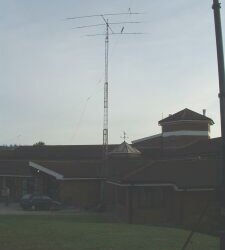
At the HF Convention I presented a talk entitled 'Making DXCC Fun with QRP', which was well received. Apart from this, it was a most enjoyable weekend and it was useful to to meet both seasoned dxers and other QRPers - hopefully we will see some new QRPers as a result. Much was learnt from the many lecture streams taking place
The photo at the right shows the scene at the front of the hotel, where the large tower supported a tribander for the HF bands and dipoles for the lower bands
